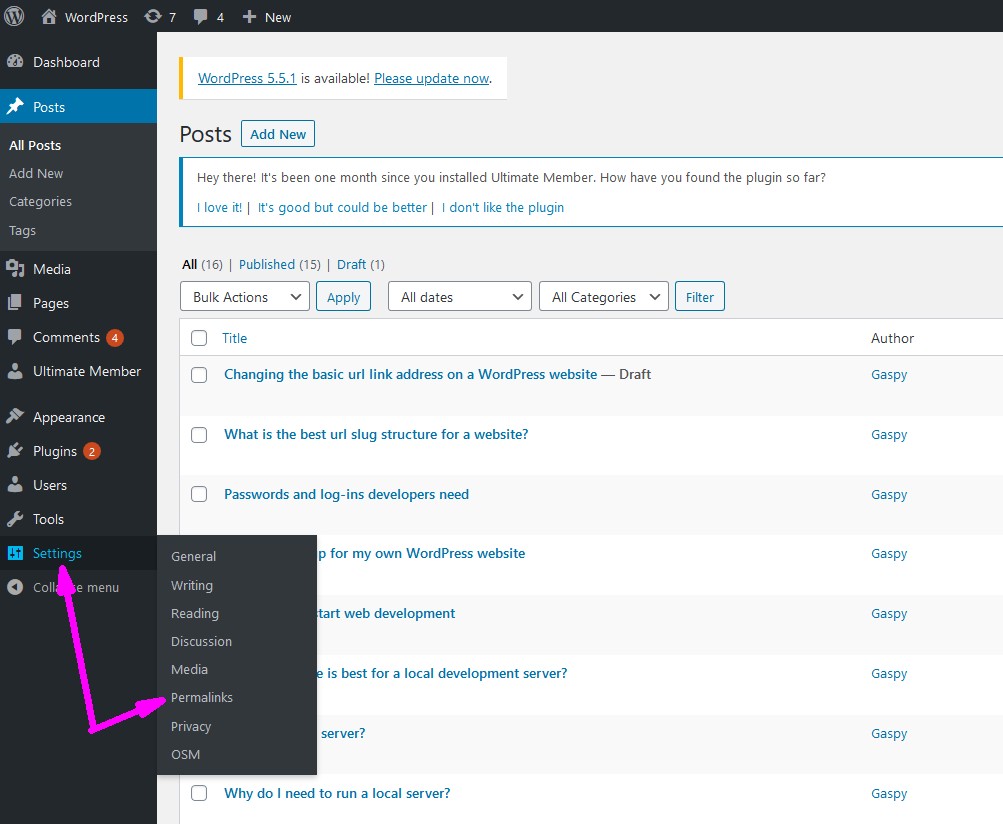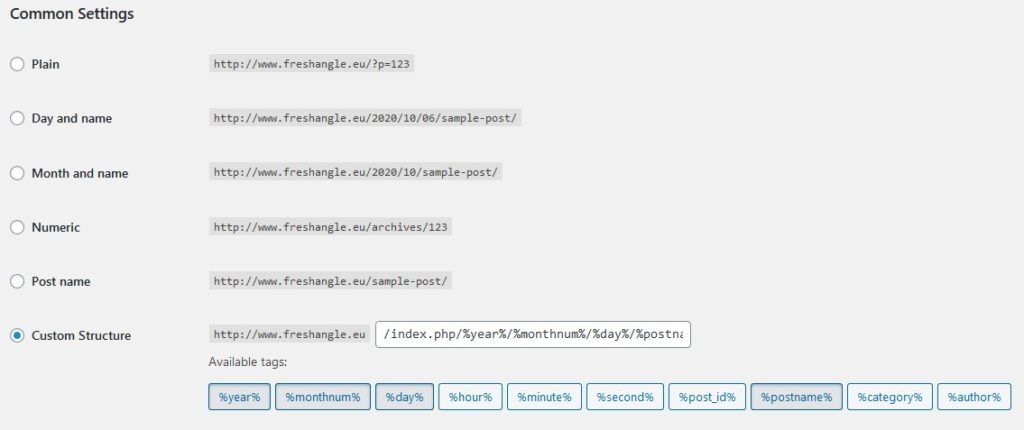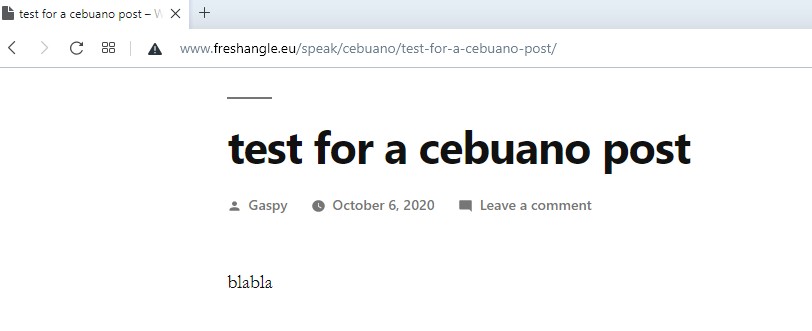I just started this website a short while ago and the default URL “slug” is was ugly:
http://www.freshangle.eu/index.php/2020/10/06/actual-name-of-my-page/I’d expected it to be something much simpler, but that’s not what the default is. It isn’t too difficult to change this, though.
Here’s the ideal url slug structure I’m aiming for:
- language category – /speak/ (no, that’s not phonetics, it’s the backslash in the URL)
- coding and web development – /webdev/
- editorial and, consequently, SEO good practices – /seo/
And the pages URLs would look like this:
http://www.freshangle.eu/speak/actual-page-name/
http://www.freshangle.eu/webdev/actual-page-name/
http://www.freshangle.eu/seo/actual-page-name/Short, concise and accurate.
Steps to change the url permalink pattern in wordpress
- Decide the structure to use for permalinks that’s most suited to your website
- Check that the relevant information is accurately set up. For example, category names and slug properties should be correct and match your needs.
- Change the permalink structure as described immediately below.
- Important – if your website is up and running already, create redirections from the old URLs to the new ones! The method below generates these redirections automatically. Redirections are crucial for SEO, with good reason: users who land in the middle of nowhere need directions to get where they want to go. Redirections guide users instantaneously.
Changing the permalink structure of a wordpress website
In the back-office of the WordPress website, click “Settings” on the left menu bar and find the “Permalinks” tab.

From there, you can select a few basic options:

We’re going to keep the same bullet choice – Custom Structure – but modify the parameters. Here is the new layout:

I manually erased the weird “/index.php/” portion. Then I toggled the parameters just beneath that on and off until I got what I wanted. Note that even though the “category” only appears once, sub-categories will appear fine, as in “/category/sub-category/article-name”.
Click the “save button” and there you go! It’s all updated throughout the website!
Of course, the crucial part then is TESTING… nothing should be declared done until it has been fully tested!
yours truly
In this case, testing means clicking a few pages open and seeing what happens. Here’s what works out-of-the-box:
- Homepage opens up fine
- Links seem to work, too, clicking from one page to the next without encumbrances
- This proves the redirections work well, even though we didn’t do anything special for it
- Also, I created a bogus test article that had both a category AND a subcategory, and it worked as intended (removed the test article afterwards):

Notice the nice “nested” categories?
http://www.freshangle.eu/speak/cebuano/test-for-a-cebuano-post/However, links in past articles are still referring to the old, ugly URL, as shown when you hover over the link with the cursor:

Links that cause redirections isn’t good for SEO. You should go back to each article and re-issue each link. You can do this manually when there aren’t too many posts, but if you’ve got more than an hour’s work then it’s better to automate it.